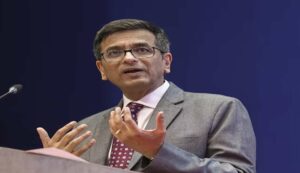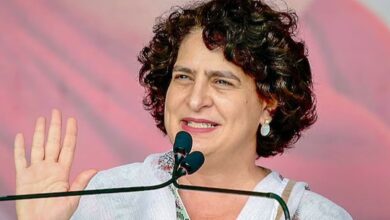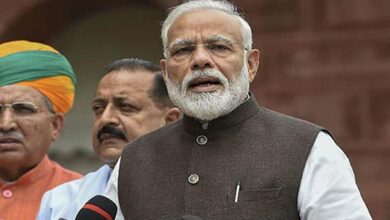These are the major decisions of Chief Justice Chandrachud
After serving on the Supreme Court for more than eight years, Chief Justice D Y Chandrachud marked his last day of work on Friday when the Constitution Bench overturned its 1967 ruling that Aligarh Muslim University (AMU) is not a minority institution in a 4:3 majority decision. On November 10, he will retire.

Chief Justice D Y Chandrachud became Chief Justice in November 2022 after being promoted to the highest court in 2016.
Among other topics, his rulings have addressed privacy, federalism, and even arbitration.
LOOKBACK AT ESSENTIAL DECISIONS MADE BY HIM
Ayodhya land dispute case: In November 2019, a five-judge Constitution Bench of the Supreme Court unanimously decided that Muslims should be granted five acres of the acquired land near the site or at a suitable prominent place in Ayodhya for the construction of a mosque, and that the entire disputed land should be given to a trust that would be established for the construction of a Ram mandir.
Electoral Bonds Case: The Union government’s electoral bond program for political financing was unanimously rejected by the Supreme Court’s five-judge Constitution Bench.
Decriminalization of Section 377: IPC Section 377 was declared unconstitutional by a five-judge Constitution Bench because it made homosexuality a crime.
Rights of unmarried women to get abortions: Chief Justice Chandrachud granted unmarried women the same access to abortions under the Medical Termination of Pregnancy (MTP) Act as married women, up to 24 weeks.
Decriminalization of Adultery: In September 2018, a five-judge Constitution Bench ruled that Section 497 of the Indian Penal Code was unconstitutional due to its violation of Articles 14, 15, and 21 and declared that adultery is not a crime.
Women’s entrance restriction lifted: In 2018, the Supreme Court overturned a law that prohibited women and girls between the ages of 10 and 50 from attending Kerala’s Sabarimala temple.
Private Property: Under Article 39(b) of the Constitution, the court decided that not all private property may be considered a material resource of the community for redistribution.
Right to Privacy: In August 2017, a nine-judge constitutional court unanimously decided that Article 21 guarantees the right to privacy as an essential component of the right to life and personal liberty.
Lieutenant Governor versus.
Delhi government: In May 2023, a five-judge constitution panel decided that the legislature had authority over bureaucrats in service delivery, with the exception of places beyond the National Capital Territory’s legislative purview.
CHANGES IN TECHNOLOGY
Just taking a glance at the technical advancements made by Chief Justice of India D Y Chandrachud, it is clear that these modifications have not only made the procedure more smooth but also more litigant-friendly.
Hybrid hearings: Establishing facilities that are conducive to litigation involves One of the major innovations is the hybrid hearing system. Chief Justice Chandrachud said at one of the proceedings, “Technology is now as necessary as legal books and is no more a matter of choice.
How will the courts operate in the absence of technology?
Cases are listed and mentioned: He had ordered that ten transfer petitions and ten bail applications be listed before each court each day.
A new system has now been developed, and each day of the week is set aside for handling cases that fall under certain categories, such as criminal, MACT, arbitration, etc.
Additionally, a new method for mentioning items was implemented, guaranteeing that all pressing topics be brought up in court on time and in an orderly fashion. Emails regarding the mention and requests are now required from all advocates.
Courts without paper: Chief Justice Chandrachud introduced e-filing for advocates, which includes an online appearance portal for advocates, in an effort to reduce the amount of paper used. The Supreme Court uploaded its case data to the National Judicial Data Grid (NJDG) in an effort to increase openness.
Smart courtrooms of the future: The Supreme Court now has nine state-of-the-art, paperless courtrooms equipped with contemporary technology. In order to view documents, judges now have new smart pop displays in front of them. Digital libraries have taken the role of courtroom legal texts. A 120-inch screen has been installed on one of the courtroom walls allowing judges to hold smooth video conferences.





